The AMD EPYC 3101 is currently the lowest-end SKU in the EPYC 3000 line, but it is also one of the most anticipated. Hot on the heels of our EPYC 3201 benchmarks and review piece we are following up with a four core variant that should be the lowest cost SKU in the initial “1” series of AMD EPYC 3000 processors.
Key stats for the AMD EPYC 3101: 4 cores / 4 threads running at a 2.1GHz base clock and up to 2.9GHz turbo. Cache stands at 8MB L3 cache. We are told this chip has a TDP of 35W, making it on par with the AMD Opteron X3421 and 5W more than the 8 core / 8 thread AMD EPYC 3201.
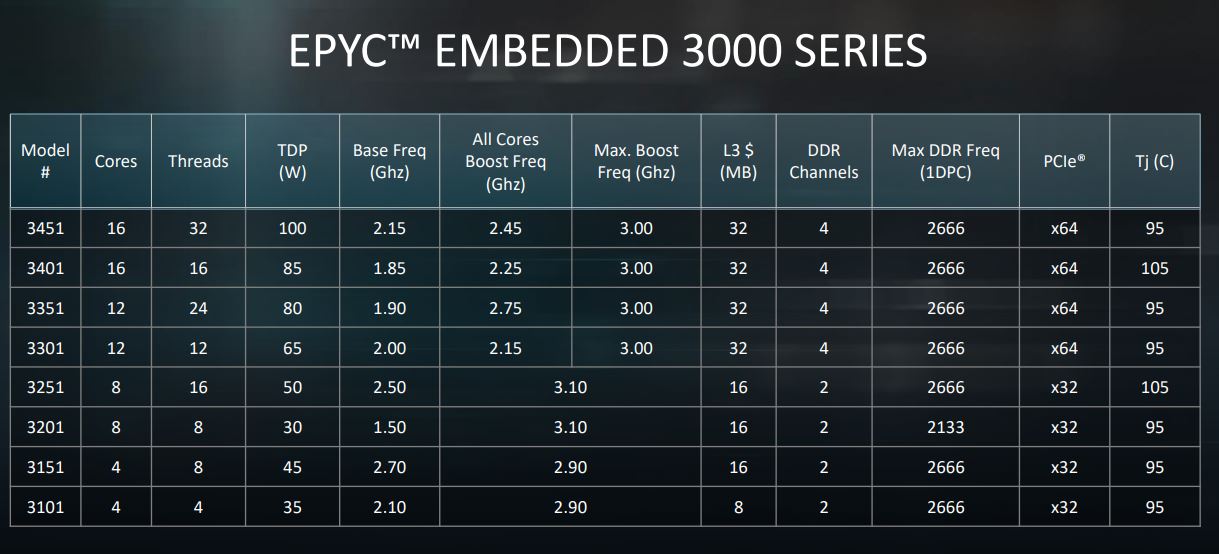
Here is what the lscpu output looks like for the chips:
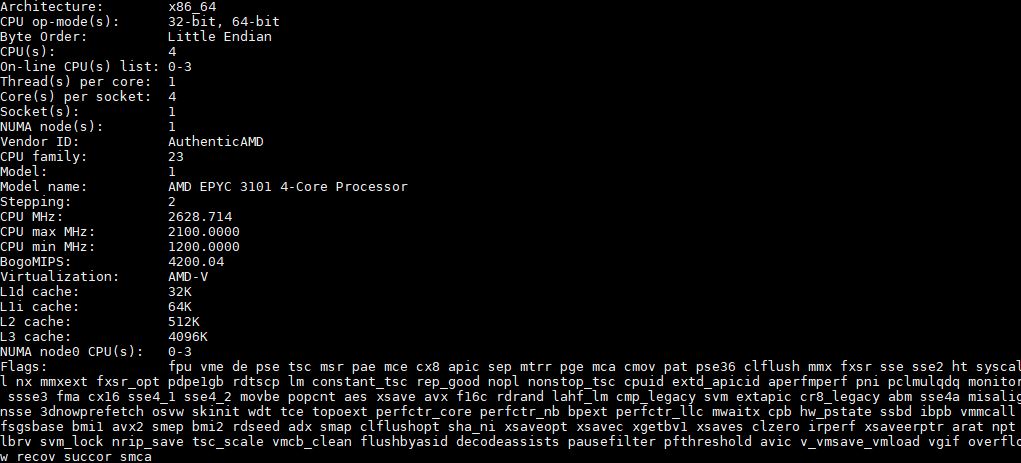
Testing Configuration
Here is our test configuration for this system:
- CPU: AMD EPYC 3101
- Motherboard: Supermicro M11SDV-4CT-LN4F
- RAM: 2x 32GB DDR4-2666 RDIMMs
- SSD: Intel DC S3710 400GB
The Supermicro M11SDV-4CT-LN4F platform we are testing on has a few features that our readers will be interested in. These include the ability to bifurcate the PCIe x16 slot into x4 x4 x4 x4 or x8 x8. We also found SRIO-V support and IOMMU support onboard. Patrick and I were testing these in parallel, and we have tested the bifurcation on the Supermicro M11SDV-8C-LN4F, Supermicro M11SDV-8CT-LN4F, and Supermicro M11SDV-4CT-LN4F and found that the feature worked on all three platforms. STH’s full review is already written and in the publishing queue.
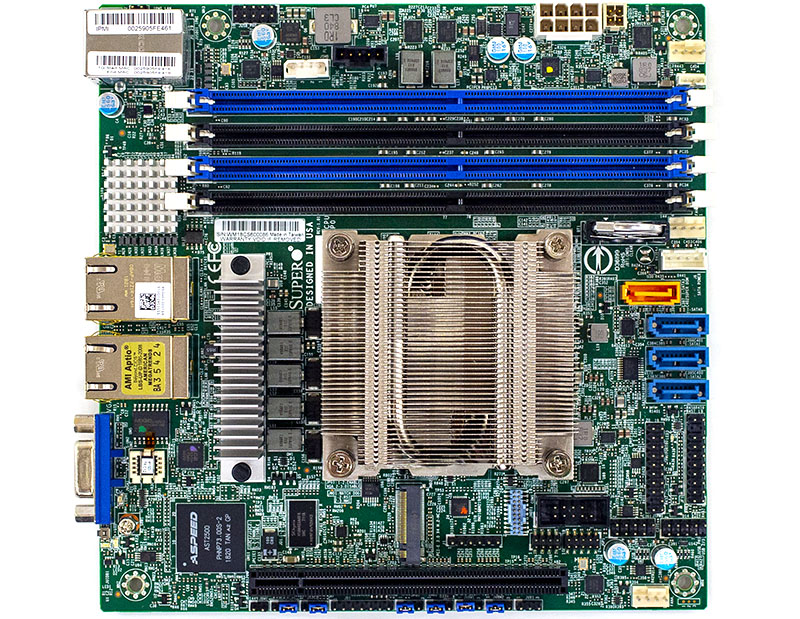
Ubuntu 18.04.2 installed without issue, recognized all of the devices and just worked out of the box and recognized everything on the system.
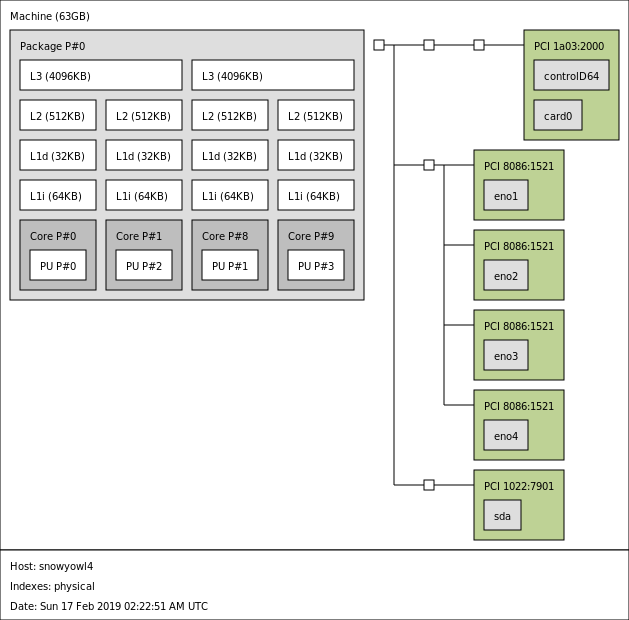
If you are running a more modern kernel the Zen core is well supported. Docker installed and worked. We joined the platforms to our Kubernetes cluster without issue. We enabled and launched KVM virtual machines without issue. We are well beyond the days of the initial Zen launch to where AMD’s cores are as easy to run on modern kernels as Intel’s cores. That is important for the market and the customers and organizations who are looking to buy in the embedded space.
Please note that as with our other embedded reviews, we focus our power consumption figures on the embedded platforms rather than at the SoC since the platform level features in low power servers have a meaningful impact on power consumption.
Next, let us take a look at the AMD EPYC 3101 performance before we get to our market discussion and final words.

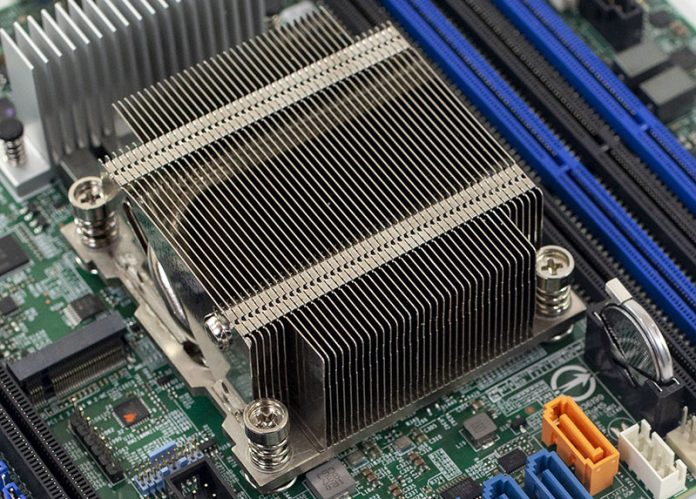



That’s hot. I can’t wait to get a few to test.
I’d be interested in an AMD option that has a feature set similar to the X11SDV-4C-TP8F (Multiple 10GbE, extra 1GbE, lots of SATA ports). I’m hoping ya’ll find something like that to review in the near future.
This isn’t a bad option compared to the mITX Xeon D options though, I hope they also throw in Flex ATX.
Hi Eddie – we have the M11SDV-4C-LN4F in a test rig, but that does not have the features you are looking for, albeit with a faster CPU in this platform. I too hope the line expands, but the X10SDV-F line was one then a second board in the D-1540/ D-1520 days. It is now much larger. My sense is that product lines on new chips in the embedded market take time to develop.
John,
Should M11 be H11?
These will be the M11SDV series.
Well I’m not envious yet, the lack of SATA ports does not make this a good NAS option.
Also dying to know pricing.
Noob about the server type CPUs, but apart from placing those in huge clusters to cut power consumption, bla bla, is there a point for a regular consumer to invest in one of those CPUs? Will it be better or irrelevant or too expensive if this will be in a media server box, streaming music in the house or the web etc
Sorry again for he noobness
I can’t wait idle power consumption tests of this platform product line
I googled and found a heap of info on the M11SDV series and I’ll be damned if I can find any config with either SFP+ ports or more than 4 SATA, rendering the series useless for a NAS.
I want 10GB networking AND more than 4 SATA ports.